What is a wedding reception?
A wedding reception is a celebratory event that follows the wedding ceremony. It is a time for family and friends to come together, congratulate the couple, and enjoy festivities.
Definition
A wedding reception is a significant and celebratory event held after the formal wedding ceremony to honor the newlyweds and officially mark the beginning of their married life together. It is a time for the couple to express gratitude to family, friends, and loved ones for their support and presence on this special day.
Typically, the wedding reception is carefully planned to reflect the couple’s unique style, preferences, and cultural traditions. It often begins with a warm welcome as guests arrive at the venue, followed by a structured program that may include speeches, toasts, and expressions of well-wishes from family members and close friends.
Central to the reception is the sharing of food and beverages, with menus that range from elegant sit-down dinners to casual buffet-style meals. The event is further enlivened by music, which may feature a live band, DJ, or curated playlists to suit the mood. Special moments such as the first dance, cake cutting, and bouquet toss often serve as highlights, creating memorable experiences for everyone in attendance.
The wedding reception is more than just a party, it is a meaningful occasion that allows the couple to celebrate their love and commitment while bringing together people from different aspects of their lives in a spirit of joy and togetherness. With thoughtful planning and heartfelt details, the reception becomes a cherished part of the wedding celebration, leaving lasting impressions on both the newlyweds and their guests.
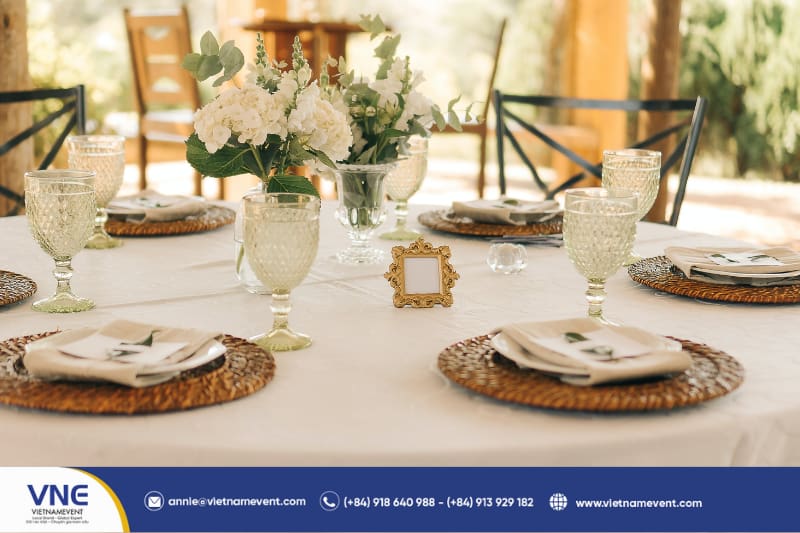
What is a wedding reception?
When is a wedding reception held?
A wedding reception is traditionally held immediately following the wedding ceremony. This timing allows for a seamless transition from the solemn and intimate exchange of vows to the festive celebration of the couple’s union. The reception typically begins once the couple has been officially pronounced married, providing an opportunity for guests to gather and congratulate the newlyweds.
In many cases, there is a brief interval between the ceremony and reception, during which the couple may take photographs, change attire, or enjoy a private moment together. During this time, guests may be directed to a pre-reception area, often referred to as a cocktail hour. Here, they can mingle, enjoy light refreshments, and set the tone for the celebration ahead.
The timing of a wedding reception may also depend on cultural traditions, venue availability, or the specific preferences of the couple. For example:
- Morning weddings: Receptions following morning ceremonies often feature brunch or lunch menus, creating a more casual and relaxed atmosphere.
- Afternoon weddings: These typically lead into early evening receptions with cocktails, dinner, and dancing.
- Evening weddings: Receptions held after evening ceremonies are usually more formal, with an emphasis on fine dining and extended entertainment such as a wedding pool party.
In some cultures or religious practices, the reception may be held on a different day than the ceremony, allowing for extended celebrations over multiple days. This is common in traditions that involve elaborate pre-wedding rituals or post-wedding gatherings, where the reception becomes the grand finale of the festivities.
Ultimately, the timing of a wedding reception is flexible and can be tailored to fit the couple’s vision, ensuring it aligns with their desired flow of events and creates a memorable experience for everyone involved.
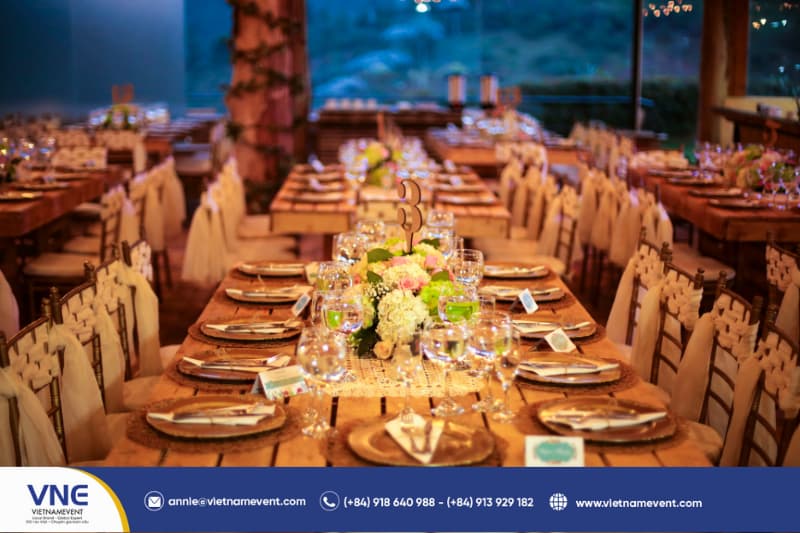
When is a wedding reception held?
How long does a wedding reception last?
The length of a wedding reception typically ranges from 4 to 6 hours, though this can vary depending on the couple’s preferences, cultural traditions, and the type of event being hosted. Formal receptions with a structured program, including a sit-down dinner, speeches, and special dances, often last closer to 5 or 6 hours.
In contrast, casual or intimate gatherings may be shorter, lasting around 3 to 4 hours and focusing on mingling and light refreshments. Morning or brunch receptions tend to be more concise, spanning 2 to 4 hours, while evening receptions are generally longer, with dinner, dancing, and late-night entertainment stretching to 6 or more hours.
Certain cultural or religious traditions may also influence the duration. For instance, some Indian weddings feature extended celebrations with hours of dancing and rituals, while Chinese or Vietnamese weddings often include multi-course meals over several hours. Venue restrictions, such as time limits or noise ordinances, can also impact the reception length, although additional time can often be arranged for a fee.
A standard wedding reception might begin with a cocktail hour for mingling and refreshments, followed by a formal dinner, speeches, and cake cutting. The event usually concludes with dancing, entertainment, and final toasts before the couple’s grand exit.
A guide to planning your wedding reception
Planning a wedding reception is an exciting but complex task that requires attention to detail and thoughtful organization. Below is a comprehensive guide to help you plan your ideal wedding reception.
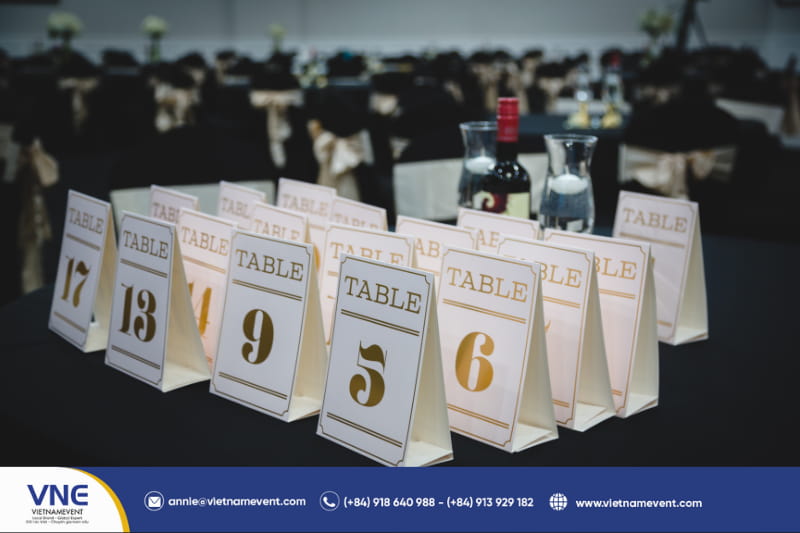
Guide to planning your wedding reception
Create the guest list
The guest list serves as the cornerstone of your wedding reception, shaping everything from the budget to the atmosphere of your special day. Begin by determining the number of attendees you can comfortably host, guided by your budget and venue capacity. To organize your list, categorize guests into groups such as immediate family, extended family, close friends, and coworkers, ensuring no one important is overlooked.
Open communication with your partner and families is essential, especially if parents are contributing financially and may wish to invite specific individuals. Once you have a draft, refine it by prioritizing those who play a meaningful role in your life and ensuring their presence will enhance your celebration.
After finalizing the list, send out invitations well in advance with clear RSVP instructions, allowing guests ample time to respond. Use tools like spreadsheets or RSVP platforms to efficiently track responses. Remember to leave some flexibility for last-minute changes or additions, and keep a few extra spots available for unforeseen circumstances.
Plan the wedding reception timeline
A well-structured timeline ensures your wedding reception flows smoothly and allows everyone to enjoy each moment without feeling rushed.
Receiving line
The receiving line is the first opportunity for the newlyweds to greet and thank their guests personally. This tradition typically takes place immediately after the ceremony or as guests enter the reception venue. For a smaller wedding, 15 minutes might be sufficient, while larger guest lists may require up to 30 minutes. Keep the line moving smoothly by limiting conversations to warm greetings and brief exchanges.
Cocktail hour
The cocktail hour provides a relaxed and welcoming atmosphere for guests as they arrive at the reception. While they mingle and enjoy light appetizers and drinks, this time can also be used for the couple to take formal photos. To enhance the experience, consider offering a signature cocktail or setting up a small live music performance. Aim to keep this segment no longer than an hour to maintain the excitement for the main event.
Guests enter the reception
Guiding guests to their seats is crucial for a smooth transition to the reception activities. Use clear signage, a seating chart, or even ushers to assist with this process. Personalized name cards or small favors at each seat can add a thoughtful touch while helping guests locate their spots quickly.
Wedding party entrance
Kick off the reception with the introduction of the bridal party. Play lively music to build excitement as bridesmaids, groomsmen, and other key members make their way into the venue. This moment sets the celebratory tone for the rest of the evening.
>> Discover more: Guide to Planning a Wedding Without a Bridal Party
Newlyweds' grand entrance
The grand entrance is one of the most anticipated moments of the reception. The couple is introduced to the cheers of their loved ones, often accompanied by an energetic song that reflects their personality. This brief but impactful moment sets the stage for the festivities ahead.
First dance
Immediately after their grand entrance, the newlyweds take the floor for their first dance. This romantic moment symbolizes their first steps together as a married couple. Choose a song that holds special meaning and keep the dance concise, around 3–5 minutes, to maintain guests' attention.
Welcome speech
Traditionally delivered by the couple’s parents or hosts, the welcome speech is a heartfelt expression of gratitude to the guests. It also serves to formally kick off the evening. A brief and warm message lasting 5–10 minutes is ideal to keep the energy upbeat and flowing.
>> Read more: A Guide to Planning Your Wedding Welcome Party
Reception meal/dinner
Dinner is a central part of the reception, whether served as a plated meal, buffet, or family-style feast. To keep guests entertained during the meal, consider including light background music or scheduling short toasts between courses. Allocate 1–1.5 hours for this portion to ensure everyone has ample time to eat and socialize.
Toasts and speeches
After dinner, the best man, maid of honor, and other close family or friends deliver their toasts. This is an emotional highlight of the evening, often mixing humor and heartfelt stories. Ensure speakers stay within 5–7 minutes each to keep the schedule on track while maintaining guests’ engagement.
Special dances
Following the speeches, special dances such as the father-daughter and mother-son dances take place. These moments, each lasting about 2–3 minutes, celebrate family bonds and often bring a sentimental touch to the evening.
Party time
Once the formalities are complete, it’s time to open the dance floor! Whether you’ve chosen a DJ or live band, ensure they play a mix of songs that cater to all ages and energy levels. Allocate 2–3 hours for dancing to allow guests to let loose and enjoy themselves.
Cake cutting
The cake-cutting is a symbolic moment that often takes place midway through the reception. Guests gather around to witness the couple’s first act of sharing as newlyweds, with plenty of photo opportunities. Follow this tradition with the serving of dessert or cake slices.
Bouquet and garter toss
For a playful touch, include the bouquet and garter toss. These activities engage guests and often lead to fun and laughter. Be sure to select lively music and encourage participation to keep the energy high.
Last dance
As the evening draws to a close, the last dance offers a final memorable moment for the couple and guests. Choose a meaningful song that reflects the day’s emotions or an upbeat track to end on a high note.
Grand exit
Bid farewell to guests with a festive send-off. Popular options include sparklers, bubbles, or confetti, creating a picture-perfect conclusion to the celebration. Allocate 15–20 minutes to ensure everyone has time to gather and participate.
After-party
For those who want to extend the celebration, an after-party offers a more casual setting to relax and continue the festivities. Consider moving to a smaller venue or lounge for an intimate conclusion to the day.
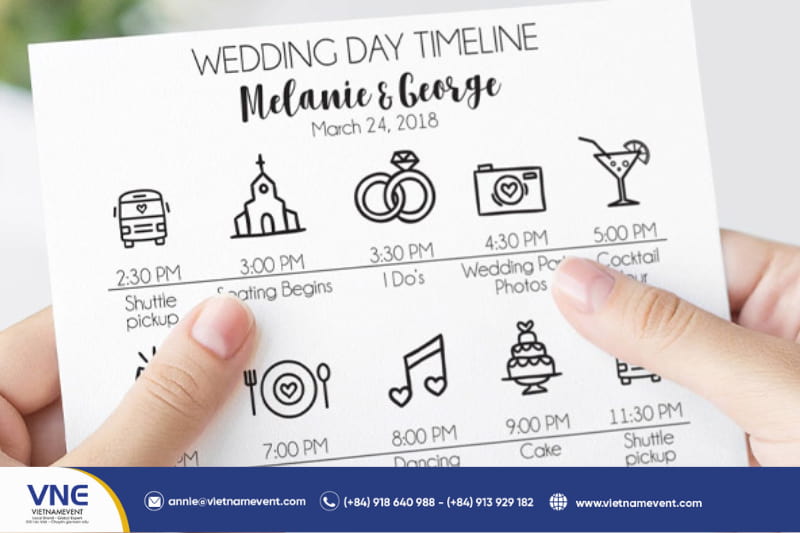
Plan the wedding reception timeline
Find the perfect venue for your wedding reception
Choosing the perfect venue is a pivotal step in planning your wedding reception, as it sets the tone for your entire celebration. Start by considering the location, ensuring it is accessible for your guests and convenient in terms of transportation, parking, and nearby accommodations.
Assess the venue’s capacity to ensure it comfortably accommodates your guest list without feeling too cramped or overly spacious. The ambiance and style should complement your wedding theme, whether you prefer the elegance of a grand ballroom, the charm of a rustic barn, the tranquility of a garden, or the serenity of a beachfront setting.
Evaluate the amenities provided, such as tables, chairs, audiovisual equipment, and dressing rooms, as well as the flexibility for personalizing the décor to match your vision. If catering is offered in-house, review the menu options and request a tasting; if not, confirm whether external vendors are allowed.
Budget considerations are equally important, understand the venue’s pricing structure, including additional fees for overtime or services, and carefully review the contract terms before finalizing. Schedule visits to potential venues to assess the space firsthand, discuss logistics with the coordinator, and ensure it aligns with your expectations.
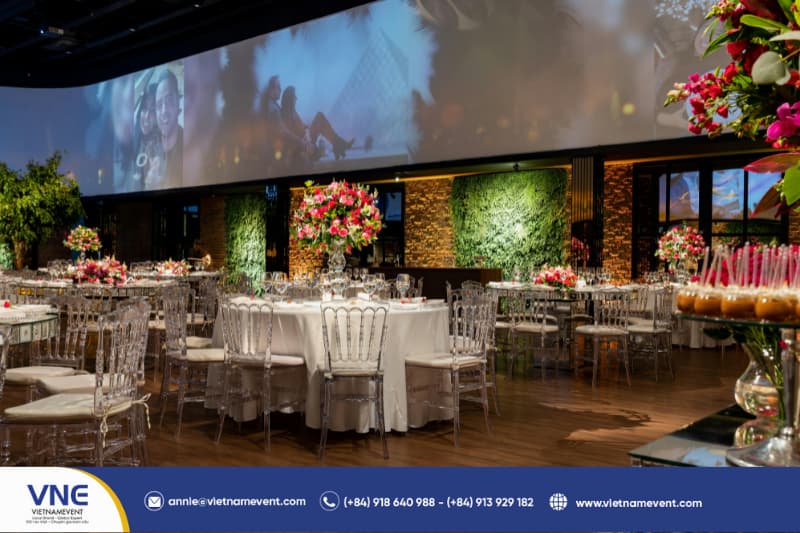
Find the perfect venue for your wedding reception
Planning the perfect wedding reception party can be overwhelming, but with the right timeline and attention to detail, your celebration will be unforgettable. If you're looking for professional wedding party services, VietnamEvent is here to help. With over 12 years of experience in event planning, we specialize in creating seamless, memorable experiences tailored to your vision. Contact us today via Hotline (+84) 913 929 182 - (+84) 918 640 988, and let us turn your special day into a masterpiece!
Views: 485

